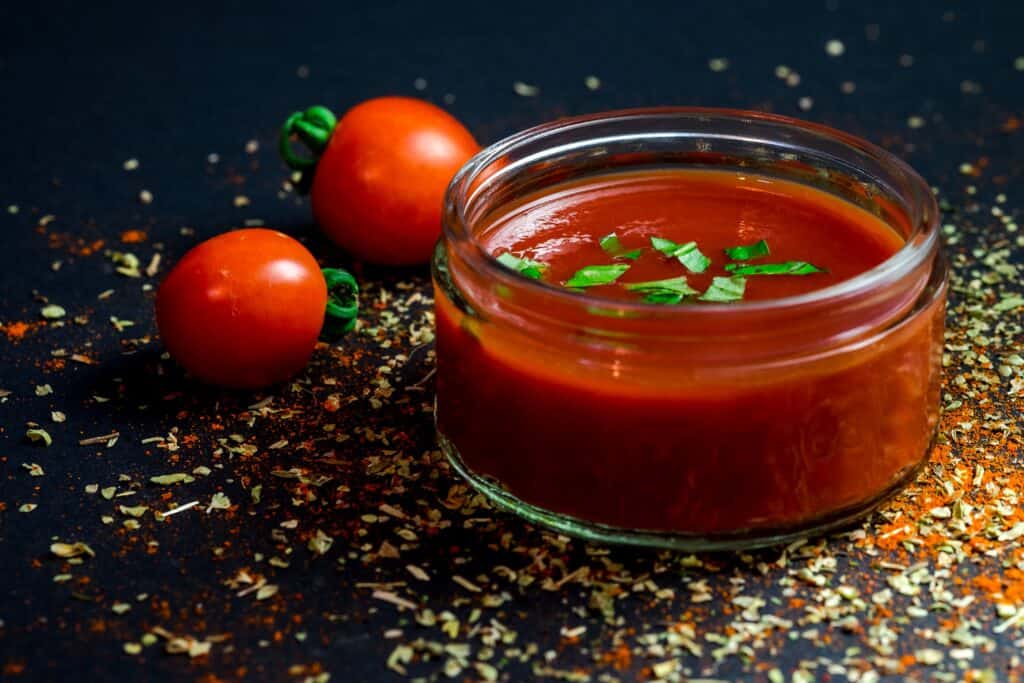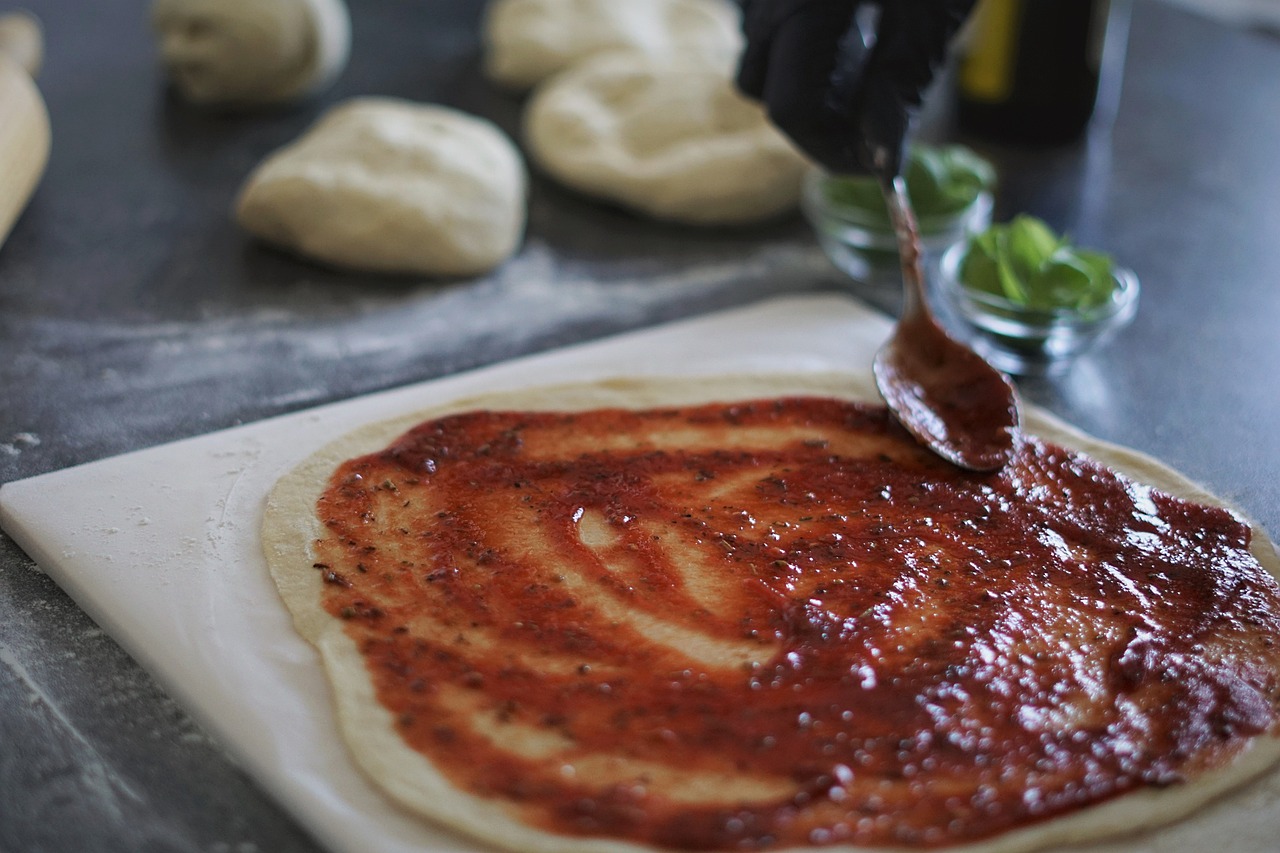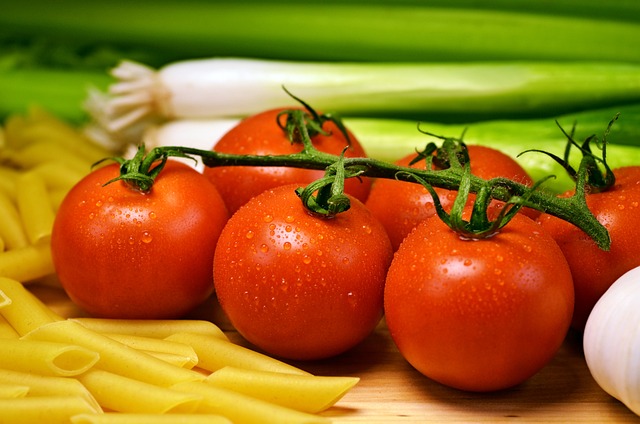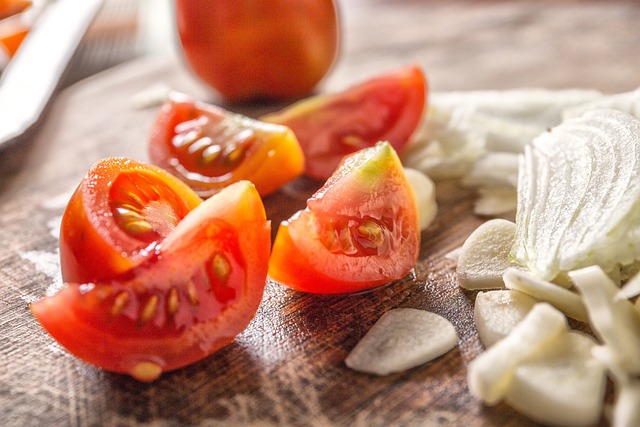The Science Behind a Thick and Creamy Pizza Sauce: Tips and Tricks
Do you want to know the secrets behind a thick, creamy pizza sauce? Look no further! This article will delve into the science of creating that perfect texture and taste.
Discover how tomato paste is crucial in achieving thickness, and learn about the chemistry of simmering and reducing the sauce for ultimate creaminess. We’ll also explore how herbs, spices, and dairy can enhance flavor and texture. Get ready to elevate your pizza game with these tips and tricks!
The Role of Tomato Paste in Creating Thickness and Creaminess
The use of tomato paste contributes to the thickness and creaminess of the pizza sauce. Tomato paste is a concentrated form of tomatoes that has been reduced and cooked down, resulting in a rich and intense flavor. It acts as a natural thickening agent due to its high concentration of pectin, a type of soluble fiber found in fruits.
When added to the sauce, tomato paste helps bind the ingredients together and gives it a velvety texture. Additionally, tomato paste adds depth and complexity to the overall taste profile of the sauce.
While alternative thickening agents are available, such as cornstarch or flour, they may alter the flavor or consistency of the sauce. Therefore, tomato paste remains one of the most popular choices for achieving that perfect thickness and creaminess in pizza sauces.
The Chemistry of Simmering and Reducing the Sauce
Simmering and reducing the sauce enhances its thickness and flavor. When you steam a sauce, you allow it to bubble at a low temperature. This slow cooking process helps break down the ingredients and release their flavors into the sauce. Simmering also allows some of the liquid in the sauce to evaporate, resulting in a thicker consistency.
To achieve the desired sauce consistency, you can use different simmering techniques. One technique is to cover the pot with a lid while simmering partially. This helps retain moisture and prevents excessive evaporation, ensuring your sauce isn’t too thick.
Another technique is to stir the sauce occasionally during simmering. This helps distribute heat evenly and prevents any burning or sticking at the bottom of the pot.
The Use of Herbs and Spices to Enhance Flavor and Texture
Using a variety of herbs and spices can greatly enhance the flavor and texture of your pizza sauce. You can achieve maximum flavor in every bite by pairing and proportioning these ingredients correctly. Additionally, the impact of heat on flavor extraction cannot be underestimated. As you simmer your sauce, the heat helps to release the aromatic compounds from the herbs and spices, infusing your sauce with their rich flavors.
To help you understand which herbs and spices work best together, here is a handy table that showcases some popular combinations:
| Herb/Spice | Best Pairings |
|---|---|
| Basil | Tomato, Garlic |
| Oregano | Tomato, Onion |
| Rosemary | Tomato, Olive Oil |
| Thyme | Tomato, Mushrooms |
Experimenting with different combinations will allow you to create a unique and delicious pizza sauce that will leave your taste buds wanting more. So get creative with your herb and spice choices, and elevate your pizza game!
The Importance of Properly Incorporating Dairy for Creaminess
When incorporating dairy into your pizza sauce, blend it slowly and evenly for a creamy texture. If you’re looking to explore non-dairy alternatives, plenty of options can give your sauce a similar richness.
Experimenting with different dairy products can also lead to exciting flavor profiles. For example, adding a dollop of sour cream or cream cheese can provide a tangy twist, while heavy cream or milk can make a smoother consistency.
Don’t hesitate to get creative and think outside the box when incorporating dairy into your pizza sauce. Remember to take it slow and mix everything well for the perfect creamy result.
The Science of Balancing Acidity and Sweetness in Pizza Sauce
Finding the right balance between acidity and sweetness in your pizza sauce is essential to create a delicious flavor profile.
The impact of pH levels on pizza sauce taste and texture is significant. A lower pH level, indicating higher acidity, can result in a tangy and vibrant flavor that cuts through the richness of the other ingredients. On the other hand, too much acidity can overwhelm the palate and leave an unpleasant aftertaste.
To achieve a balanced pizza sauce, you can explore alternative sweeteners that help counteract the acidity while adding depth to the overall taste. Options like honey or maple syrup provide natural sweetness without overpowering the sauce.

Frequently Asked Questions
How Long Should the Pizza Sauce Be Simmered to Achieve the Desired Thickness and Creaminess?
To achieve your pizza sauce’s desired thickness and creaminess, simmer it for the recommended amount of time. Steaming time is crucial to attain the perfect texture for your sauce.
Can I Use Fresh Tomatoes Instead of Tomato Paste to Make a Thick and Creamy Pizza Sauce?
You can use fresh tomatoes for a thick and creamy pizza sauce. The flavor and texture will be different compared to tomato paste. Pros include freshness, but cons include longer cooking time.
What Are Some Alternatives to Dairy for Achieving a Creamy Texture in Pizza Sauce?
You can achieve a creamy texture in pizza sauce without dairy using alternatives like coconut milk, cashew cream, or almond milk. Blending and simmering can also help create a thick and creamy consistency.
Are There Any Specific Herbs and Spices That Work Best for Enhancing the Flavor and Texture of Pizza Sauce?
To enhance the flavor and texture of your pizza sauce, try using herbs like basil, oregano, and garlic powder. These can add a delicious kick to your sauce and give it that velvety consistency you’re looking for.
How Can I Balance the Acidity and Sweetness in Pizza Sauce Without Compromising the Desired Thickness and Creaminess?
To balance acidity and sweetness in pizza sauce without compromising thickness and creaminess, consider the flavor profiles of herbs and spices. Use natural sweeteners to enhance sweetness and adjust cooking time or add thickening agents for desired consistency.






